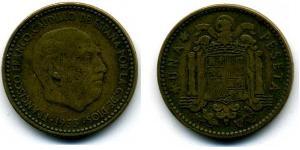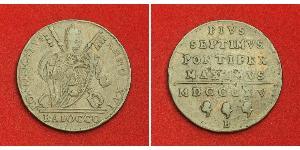(sold for $7.0)
1770, Netherlands, Gronningen & Ommeland. Nice Copper Duit Coin. VF!
Mint Year: 1770 Denomination: Duit Reference: KM-66. Condition: A nice VF! Material: Copper Diameter: 21mm Weight: 2.89gm
Obverse: Crowned coat-of-arms of Groningen & Ommeland.
Reverse: Privy mark, flanked by stars above inscription in three lines (GRON ET OMMEL.) above date (1770).
Groningen is the northeasternmost province of the Netherlands. In the east it borders the German state of Niedersachsen (districts of Leer and Emsland), in the south Drenthe, in the west Friesland and in the north the Wadden Sea. The capital of the province is the city of Groningen.
The Dutch Republic � officially known as the Republic of the Seven United Netherlands (Republiek der Zeven Verenigde Nederlanden), the Republic of the United Netherlands, or the Republic of the Seven United Provinces (Republiek der Zeven Verenigde Provinciën) � was a republic in Europe existing from 1581 to 1795, preceding the modern Kingdom of the Netherlands. Alternative names include United Provinces, Foederatae Belgii Provinciae (Federated Belgic Provinces), and Belgica Foederata (Belgic Federation).
Until the 16th century, the Low Countries - roughly corresponding to modern Netherlands, Belgium and Luxembourg - consisted of a number of duchies, counties and bishoprics, most of which were under the supremacy of the Holy Roman Empire.
Most of the Low Countries had come under the rule of the House of Burgundy and subsequently the House of Habsburg. In 1549 Holy Roman Emperor Charles V issued the Pragmatic Sanction, which further unified the Seventeen Provinces under his rule. Charles was succeeded by his son, King Philip II of Spain. In 1568 the Netherlands, led by William I of Orange, revolted against Philip II because of high taxes, persecution of Protestants by the government, and Philip's efforts to modernize and centralize the devolved-medieval government structures of the provinces. This was the start of the Eighty Years' War.
In 1579 a number of the northern provinces of the Netherlands signed the Union of Utrecht, in which they promised to support each other in their defence against the Spanish army. This was followed in 1581 by the Act of Abjuration, the declaration of independence of the provinces from Philip II.
In 1582 the United Provinces invited Francis, Duke of Anjou to lead them; but after a failed attempt to take Antwerp in 1583, the duke left the Netherlands again. After the assassination of William of Orange (July 10, 1584), both Henry III of France and Elizabeth I of England declined the offer of sovereignty. However, the latter agreed to turn the United Provinces into a protectorate of England (Treaty of Nonsuch, 1585), and sent the Earl of Leicester as governor-general. This was not a success and in 1588 the provinces became a republic.
Only 1$ shipping for each additional item purchased!

|
Posted by:
anonymous 2017-02-24 |
1 Ducat Austria-Hungary (1867-1918) Gold Franz Joseph I (183 ...
group has 22 coins / 12 prices
⇑
30 Kreuzer Austria Silver
group has 5 coins / 3 prices
⇑















-300-150-WL5_AAEBP_sAAAEjIkLAPfNR.jpg)








